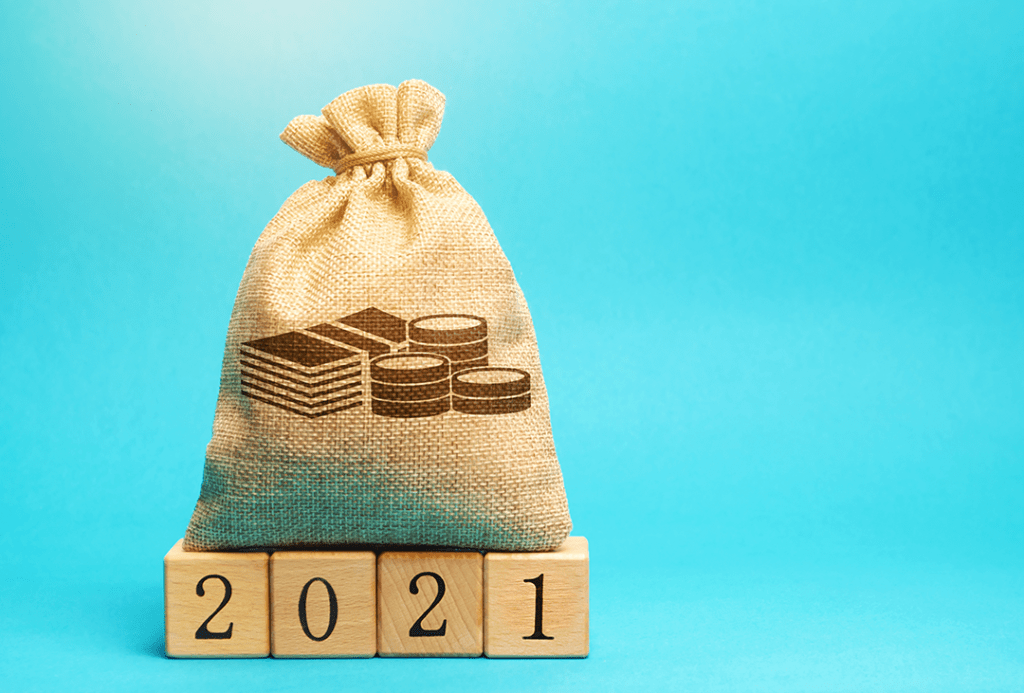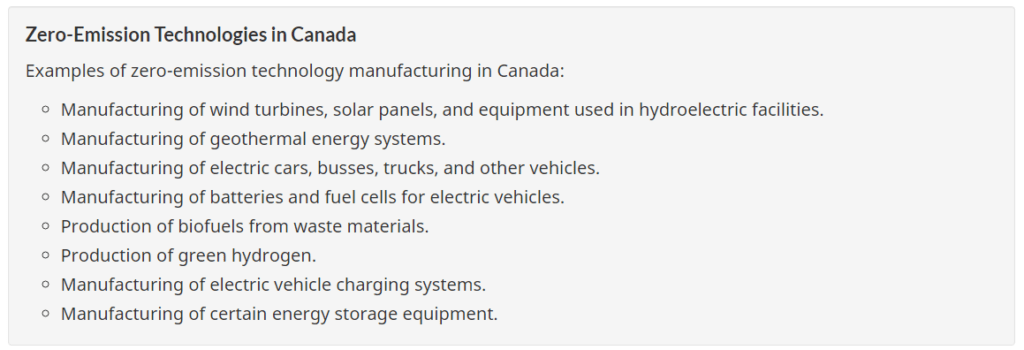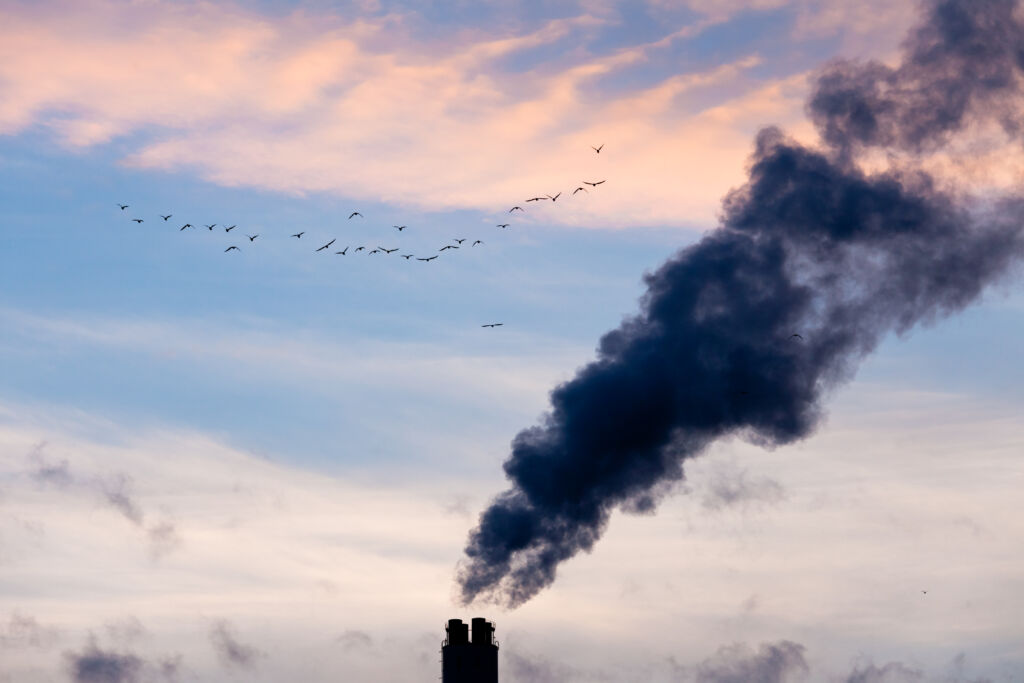On April 19th, 2021, the Government of Canada announced its 2021 federal budget, presented by Chrystia Freeland, Canada’s Deputy Prime Minister and Finance Minister. The budget primarily focused on the federal government’s plan for job creation, economic growth, with a focus on supporting small businesses, and providing opportunities for women, young Canadians, and marginalized communities to foster greater resiliency as the country recovers from the COVID-19 health crisis. Chapter 5 of the budget addressed climate action and the transition towards a green economy specifically, working to build Canadian prosperity as the country transitions to net-zero emissions by 2050.
On April 20th, 2021, the Province of British Columbia also released their 2021 budget, outlining the provincial plans for recovery and how money will be allocated to support various programs, initiatives, and sectors. BC’s provincial budget also focuses on economic recovery and job creation, as well as support for small businesses. It highlights better health and mental health care, a focus on advancing reconciliation with First Nations, building more affordable housing and child care, and how the government plans to prepare the province for a greener recovery.

The recently announced federal and BC provincial budgets for 2021 with have an impact on Canada’s clean technology sector.
This post gives an overview of the two budgets and how they will impact the clean technology sector in Canada, and in British Columbia specifically.
The Government of Canada’s 2021 Federal Budget
The 2021 federal budget dedicates Chapter 5 to “A Healthy Environment for a Healthy Economy” and identifies supporting the clean technology sector as a key strategy for Canada to take climate change mitigation action now. “Fighting climate change, including reaching net-zero, will be a cornerstone of this government’s plan to rebuild the economy, create middle class jobs, and ensure Canadian industry stays competitive on the world stage.”
Since 2015, around $60 billion has been spent to address climate action and clean growth and in 2020, the government announced an investment of an additional $15 billion for Canada’s strengthened climate plan. Building upon these recent investments, Budget 2021 will allocate another “$17.6 billion towards a green recovery to create jobs, build a clean economy, and fight and protect against climate change.” The plan is broken down into six main sections that tackle various aspects of the environment and economy.
5.1 Growing the Net-Zero Economy
Investments into a green economic recovery are being made by governments and businesses around the world, particularly in advanced economies like Canada’s. The 2021 federal budget is dedicating funds to:
- decarbonize large emitters such as industry and transforming sectors (like steel, aluminum, and cement production and the automotive and aerospace industries) by adopting clean innovations and technologies
- provide up to $8 billion in support for domestic greenhouse gas (GHG) emissions reduction projects through the Strategic Innovation Fund’s Net Zero Accelerator
- support large-scale clean technology projects by making up to $1 billion available to help draw in more private sector investments for these projects
- reduce general corporate and small business income tax rates by 50% for businesses that manufacture zero-emission technologies

The 2021 budget announced by the Government of Canada includes support for manufacturers of zero-emission technologies.
- accelerate investment in clean energy technologies such as hydroelectric energy storage, renewable fuel production, hydrogen production through electrolysis of water, and hydrogen refueling, while also removing restrictions related to investments in water current, wave and tidal energy, active solar heating, and geothermal energy technologies
- enhance Canada’s supply of critical minerals needed to produce electric vehicle batteries, solar panels, and other low-carbon technologies by contributing $9.6 million to create a Critical Battery Minerals Centre of Excellence at Natural Resources Canada, as well as $36.8 million for federal research and development to advance processing and refining expertise for these materials
- provide $56.1 million to develop and implement a set of codes and standards for zero-emission vehicles (ZEVs) in coordination with international partners, including the United States
- invest $14.9 million in clean power infrastructure that ensures 100% of electricity generation for federal government buildings is from clean sources by 2022
- provide $104.6 million to Environment and Climate Change Canada to strengthen greenhouse gas emissions regulations for light and heavy-duty vehicles, establish national methane regulations for large landfills, and take action to reduce or make better use of waste at these sites
- provide $54.8 million to Natural Resources Canada to expand the Investments in Forest Industry Transformation program, working with municipalities and community organizations that are ready for new forest-based economic opportunities
- publish a green bond framework (with an issuance target of $5 billion) that details how investors can make use of opportunities to finance Canada’s efforts to mitigate climate change and protect the environment
5.2 Investing in a Clean Industry Future
In order to transition to net-zero emissions by 2050, Canada will need to transform industry across sectors.

Industry makes up a large part of emissions around the world. Canada’s industrial sector is no different, with large facilities producing around 40% of GHG emissions in the country.
The 2021 budget proposes to do this by:
- investing in a clean industry future to decarbonize large industrial facilities that make up nearly 40% of GHG emissions in Canada by supporting research, development, and demonstrations of carbon capture, utilization, and storage (CCUS) systems (through tax incentives and an investment of $319 million over seven years) and making use of low-carbon fuels (through an investment of $67.2 million over seven years)
- providing $1.5 billion to Natural Resources Canada to establish a Clean Fuels Fund that supports the production and distribution of low-carbon and zero-emission fuels such as hydrogen and biomass, delivering on the Hydrogen Strategy for Canada, with $67.4 million over seven years going to Measurement Canada to measure commercial transactions of low-carbon fuels accurately
- supporting the long-term development of low-emission marine and aviation fuels by providing $227.9 million to the Treasury Board Secretariat to implement a Low-Carbon Fuel Procurement Program within the Greening Government Fund
- establishing a Centre for Innovation and Clean Energy in British Columbia by providing up to $35 million to advance the scale-up and commercialization of clean technologies, in partnership with the Government of British Columbia
- investing $40.4 million to support feasibility and planning of hydroelectricity and grid interconnection for projects in northern Canada and the Indigenous communities that are being impacted by climate change, providing clean power and helping to reduce emissions from projects like mining in the north
5.3 Advancing Canada’s Climate Plan
Building on the Pan-Canadian Framework on Clean Growth and Climate Change, the 2021 federal budget aims to provide new investments to ensure Canada exceeds its greenhouse gas emissions reduction targets by 2030. This will be done by:
- investing $36 million in the Strategic Partnerships Initiative to build capacity for local, economically sustainable clean energy projects in First Nations, Inuit, and Métis communities
- providing $15 billion for public transit projects such as new subway extensions and electrifying transit fleets using zero-emission vehicles
- providing $94.4 million to Environment and Climate Change Canada to increase domestic and international capacity and action to address climate change, enhance clean tech policy capacity, support a Clean Growth Hub, and fund reporting requirements under the Canadian Net-Zero Emissions Accountability Act
- delivering quarterly Climate Action Incentive payments to Canadian families and communities
Supporting Agriculture and Canadian Farmers
Additional spending is being allocated for the agricultural sector to:
- support farmers by returning a portion of proceeds from the price on pollution to them, estimated to be $100 million in the first year, with future years being relative to the price on pollution collected in the prior fiscal year
- provide $165.5 million to the Agricultural Clean Technology program, prioritizing $50 million to purchase more efficient grain dryers for Canadian farmers
- provide $200 million for the Agricultural Climate Solutions program to target projects that are accelerating emissions reduction by improving nitrogen management, increasing adoption of cover cropping, and normalizing rotational grazing
- provide $60 million for the Nature Smart Climate Solutions Fund to protect existing wetlands and trees on farms
- allocate $10 million for the Agricultural Clean Technology Program to power farms with clean energy and move them off of diesel power
Integrating Climate into the public sector
Ensuring a stable and predictable transition requires climate mitigation and adaptation to be applied in a “rigorous, consistent, and measurable manner” at the federal government level. The budget proposes achieving this by:
- providing $36.2 million to Environment and Climate Change Canada to develop and apply a climate lens so that climate considerations and integrated throughout the federal government’s decision-making
- engaging with provinces and territories on climate-related disclosures to establish corporate reporting standards for Canada’s Crown corporations
- consulting on border carbon adjustments with Canada’s international partners to ensure a level playing field that supports competitiveness while protecting the world’s shared environment
5.4 Building Green Homes and Communities
13% of Canada’s emissions are produced from energy that’s used to heat and cool buildings. By making residential and commercial buildings more energy efficient, both emissions and energy bills can be reduced. Interest-free loans of up to $40,000 will be provided to homeowners or landlords for “deep retrofits” for homes, supported through $4.4 billion in funding to the Canada Mortgage and Housing Corporation (CMHC) for distribution to those undertaking an authorized EnerGuide energy assessment.

Addressing energy efficiencies in residential and commercial buildings is another key step in reducing emissions in Canada.
5.5 Adapting to Climate Change for a More Resilient Future
Mitigating the impact of climate-related disasters is also highlighted in the 2021 federal budget, aiming to create more resiliency in Canadian communities and mitigate future impacts of ongoing climate change. The budget proposes to:
- provide $1.4 billion over 12 years to Infrastructure Canada, supporting projects like wildfire mitigation activities, rehabilitation of storm water systems, and restoration of wetlands and shorelines
- invest $11.7 million over five years to Infrastructure Canada to renew and update standards and guidance provided by the Standards Council of Canada to help communities plan and build roads, buildings and other infrastructure that is more durable and resilient to the effects of a changing climate
- provide $63.8 million over three years to Natural Resources Canada, Environment and Climate Change Canada, and Public Safety Canada to collaborate with provinces and territories in completing flood maps for higher-risk areas
- provide $100.6 million over five years to Natural Resources Canada, supporting increased mapping of areas at risk of wildfires in northern Canada
- provide $1.9 billion over five years to Public Safety Canada to support provincial and territorial disaster response and recovery efforts
- provide $25 million to the Government of Yukon in support of climate change priorities and collaboration with Crown-Indigenous Relations, Northern Affairs Canada, and Environment and Climate Change Canada
- provide $15 million over three years to accelerate archeological and conservation work of two historic shipwrecks
5.6 Protecting Nature
As the second-largest country in the world in terms of land mass, Canada is home to 25% of the planet’s wetlands and boreal forests, 20% of freshwater supplies, the world’s longest coastline, and about 20% of the world’s remaining wilderness.

Canada is the second-largest country in the world by land mass and is home to a quarter of the world’s wetlands and boreal forests.
Budget 2021 outlines conservation goals that can help protect nature, address biodiversity loss, and protect at-risk species, including:
- conserving 25% of Canada’s lands and oceans by 2025
- providing $2.3 billion over five years to Environment and Climate Change Canada, Parks Canada, and the Department of Fisheries and Oceans to conserve 1 million square kilometers, create jobs, accelerate provincial and territorial protected areas, support Indigenous Guardians, and protect species at imminent risk of disappearing
- providing $200 million over three years to Infrastructure Canada to establish a Natural Infrastructure Fund that supports natural and hybrid infrastructure projects in various cities and regions across the country
- conversing Canada’s oceans through a $976.8 million investment to protect healthy oceans, commercial fishing stocks, and quality of life, particularly in coastal communities
- reducing plastic waste in oceans through a $10 million increase to the Sustainable Fisheries Solutions and Retrieval Support Program and the “Ghost Gear Fund” to retrieve and dispose of lost fishing gear and plastic waste, as well as to test new technology and support international efforts to decrease the amount of ghost gear floating in the oceans
- preserving wild Pacific salmon stocks through a $647.1 million investment in conservation, research, and management of commercial and recreational fisheries, including doubling the British Columbia Salmon Restoration and Innovation Fund
- providing $20 million to expand Fisheries and Oceans Canada engagement with the Province of British Columbia, Indigenous communities, industry, scientists, and other stakeholders, with an investment of $3 million into aquaculture practices on the BC coast that are economically, environmentally, and socially sustainable
- developing the Canada Water Agency in collaboration with provinces, territories, Indigenous peoples, and other key stakeholders through a $17.4 million investment
- providing $25.6 million to Environment and Climate Change Canada to create a Census of the Environment as a way to monitor trends and facilitate informed decision-making
- providing $25.4 million to support pan-Arctic scientific research through the Polar Continental Shelf Program
- providing $476.7 million to renew the Chemicals Management Plan that protects Canadians and the environment from exposure to harmful chemicals
Highlights from other proposed investments announced in the federal budget for those working in the digital economy can be found via Vancouver Tech Journal’s Budget 2021 Cheatsheet.
The Government of British Columbia’s 2021 provincial budget
British Columbia’s 2021 provincial budget also provides funds to support “people now while building the foundation for strong recovery.” These proposed funds will be used to improve healthcare and childcare services, to support families and individuals still impacted financially by the COVID-19 pandemic, to increase income and disability assistance, to invest record amounts in upgrading BC’s infrastructure, and to support businesses across a variety of sectors. Investment into the clean technology sector is being made at the provincial level as well to prepare the province for a greener recovery, building on the government’s CleanBC plan that was released in 2018.
The 2021 provincial budget has allocated $506 million in CleanBC investments to “reduce emissions, invest in clean energy and cleantech, and prepare for climate change.” Much still remains to be seen in terms of the practical distribution of these funds. For the clean technology sector in the province, CleanBC funding set out in Budget 2021 will mean $269 million in new funding for clean transportation, energy-efficient buildings, and other cleantech initiatives. In total, this brings funding for CleanBC to nearly $2.2 billion since the 2019-2020 fiscal year.
The breakdown of allocations includes:
- $10 million to expand the Grow BC, Feed BC, Buy BC strategy for agrifood and seafood sectors
- $5 million allocated to extend the Clean Coast, Clean Waters program tackling marine shoreline clean-up and derelict vessel removal in BC’s coastal communities
- $506 million in supporting CleanBC
- $269 million in new operating and capital funding for clean transportation, energy efficient buildings and communities, and other cleantech and climate change initiatives, including:
- $123 million in operating funding for cleaner transportation (rebates for zero-emission vehicles, charging stations, commercialization of medium and heavy-duty vehicles, and improving active transportation infrastructure for pedestrians and cyclists)
- $57 million for supporting energy efficient buildings and communities
- $60 million in one-time funding to support the Centre for Innovation and Clean Energy and for cleantech investments to support partnership opportunities with the federal government
- $10 million in total for planning and preventative action to better understand climate risk, the potential impacts of climate change, and to develop an ongoing climate strategy
- $7 million will go towards cleaner transportation initiatives
- $12 million to develop policy around reducing carbon intensity of fuel and develop the hydrogen economy
- $96 million for the CleanBC Program for Industry through the CleanBC Industrial Incentive Program (incentives to large regulated industrial operations upon reducing emissions) and the CleanBC Industry Fund (financing emission reduction projects identified by industry)
- $120 million to continue the Climate Action Tax Credit in 2023/24
- $269 million in new operating and capital funding for clean transportation, energy efficient buildings and communities, and other cleantech and climate change initiatives, including:

The Government of British Columbia’s 2021 budget allocations for CleanBC, addressing clean energy and cleantech innovation efforts in the province.
There is also mention of an InBC Strategic Investment Fund of $500 million over three years to promote decarbonization of the economy, among other things, to “deliver economic, environments, and societal returns.”
The Good and Bad news for Canadian cleantech Companies
While it’s becoming clear that the Canadian clean technology sector is a global leader in cleantech innovation, the country does not yet have sufficient commercial scale-up, export, and industry adoption — an issue that both of these budgets intend to address. The global clean technology market is set to exceed $2.5 trillion by next year, making it critical to support Canadian cleantech companies today so that they can be at the forefront of providing impactful innovations, both domestically and internationally.
As increasing amounts of funding funnel into the clean technology sector, it is becoming more apparent that the we also need to implement credible and consistent metrics to determine just how much impact any given clean technology is having on mitigating the effects of climate change. We need standardized regulations and enforcement in place to promote rapid change at a national and, ideally, global scale. Currently, making a business case out of the cost-benefit analysis still remains one of the biggest challenges in accelerating cleantech adoption across investors, industries, and countries.
Nevertheless, one very clear and promising theme courses throughout these new federal and provincial budgets: governments, industries, and businesses in Canada are investing in clean technologies in an effort to fight the climate crisis, while also ensuring long-term economic success by prioritizing sustainable development using clean technologies that reduce or produce no GHG emissions.
Details of these two budgets and the implementation of their proposed spending allocations will continue to emerge throughout 2021.


